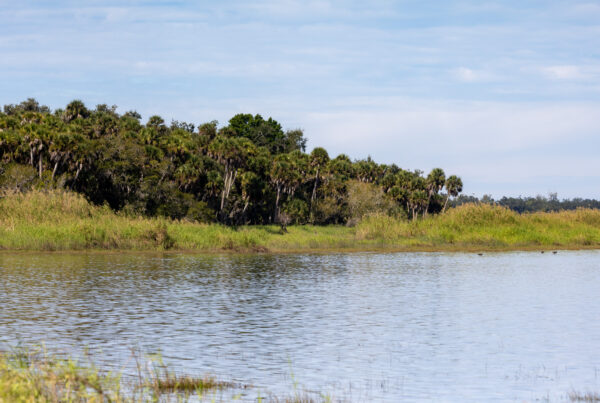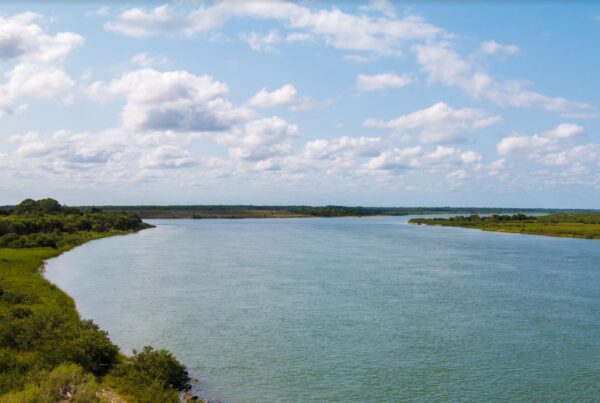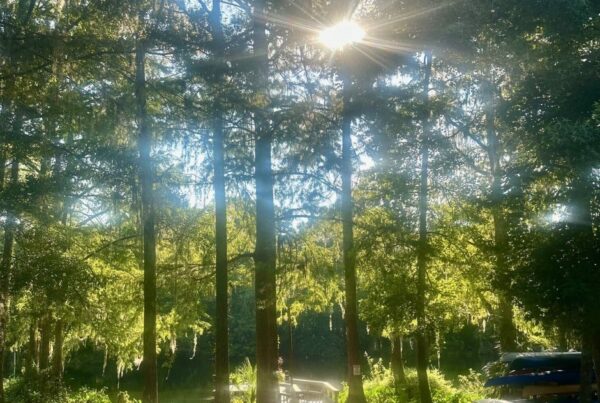by Marney Richards, Education & Outreach Coordinator
On a windy, overcast day in October, I joined an FWF volunteer to hike at Grayton Beach State Park. I was excited to walk with an experienced biologist and learn more about the plants, animals, and ecology of the area. We chose the Dune Lake Trail, a short hike through the dune ecosystem, to pine flatwoods, and along the salt marsh. With a variety of plants to identify and photograph, a short hike turned into an enjoyable 2-hour walk. I was introduced to several new species of native plants, and my favorites were along the path through the dunes.
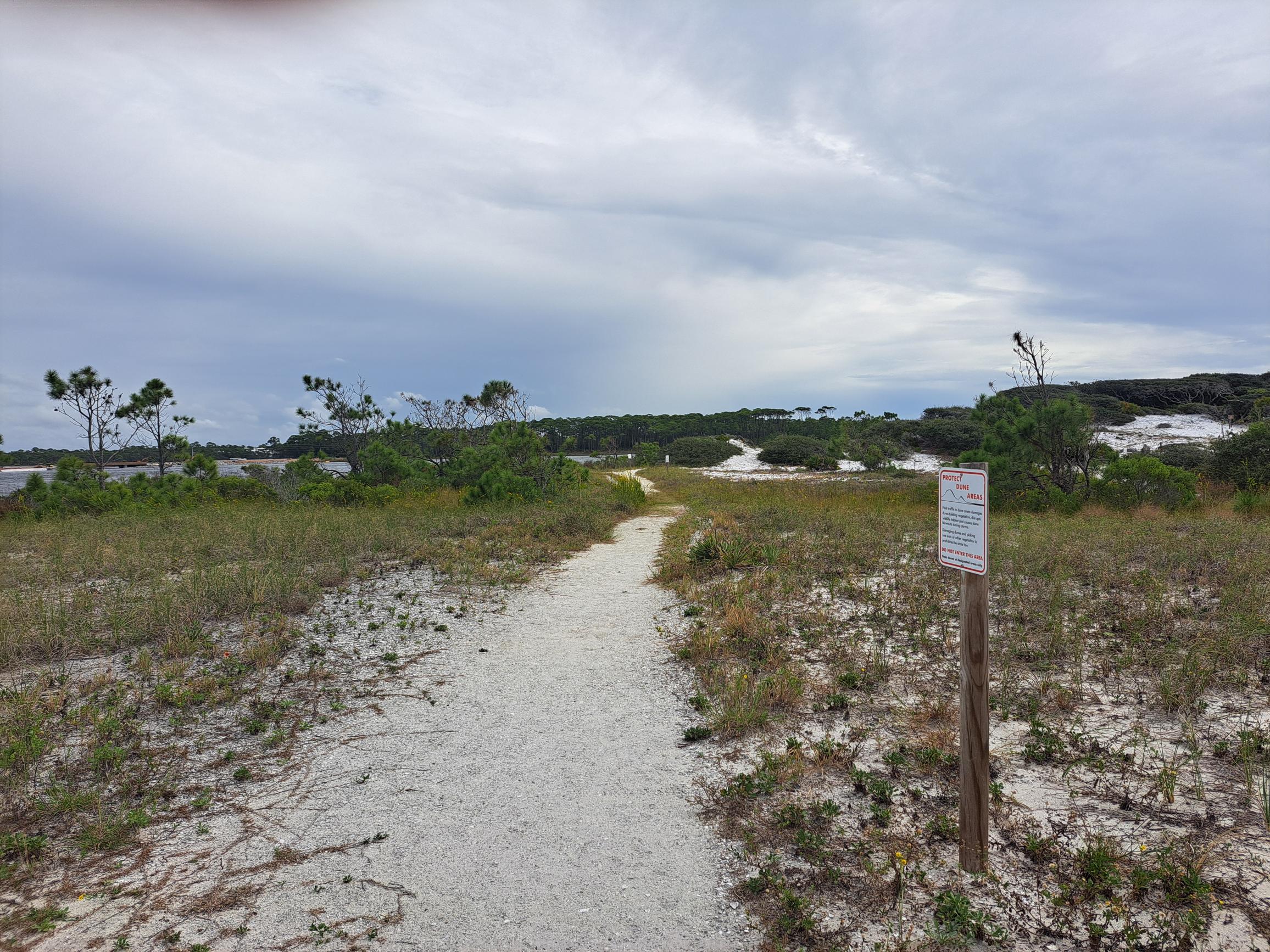
Grayton Beach State Park. Photo by Marney Richards
At a glance, dunes can appear scraggly and dry without much variety in plant or animal life. But there’s diversity and resilience in the coastal plants that are adapted to wind and salt spray. They stabilize the dunes and provide food and shelter for the varied animal life there.
The small rosette of coastalplain honeycombhead (Balduina angustifolia) will overwinter, then grow to a bushy plant about 3 feet in height, loaded with flowers in late summer to fall. It attracts numerous butterflies, including gulf fritillaries, as well as an amazing variety of native bee species.
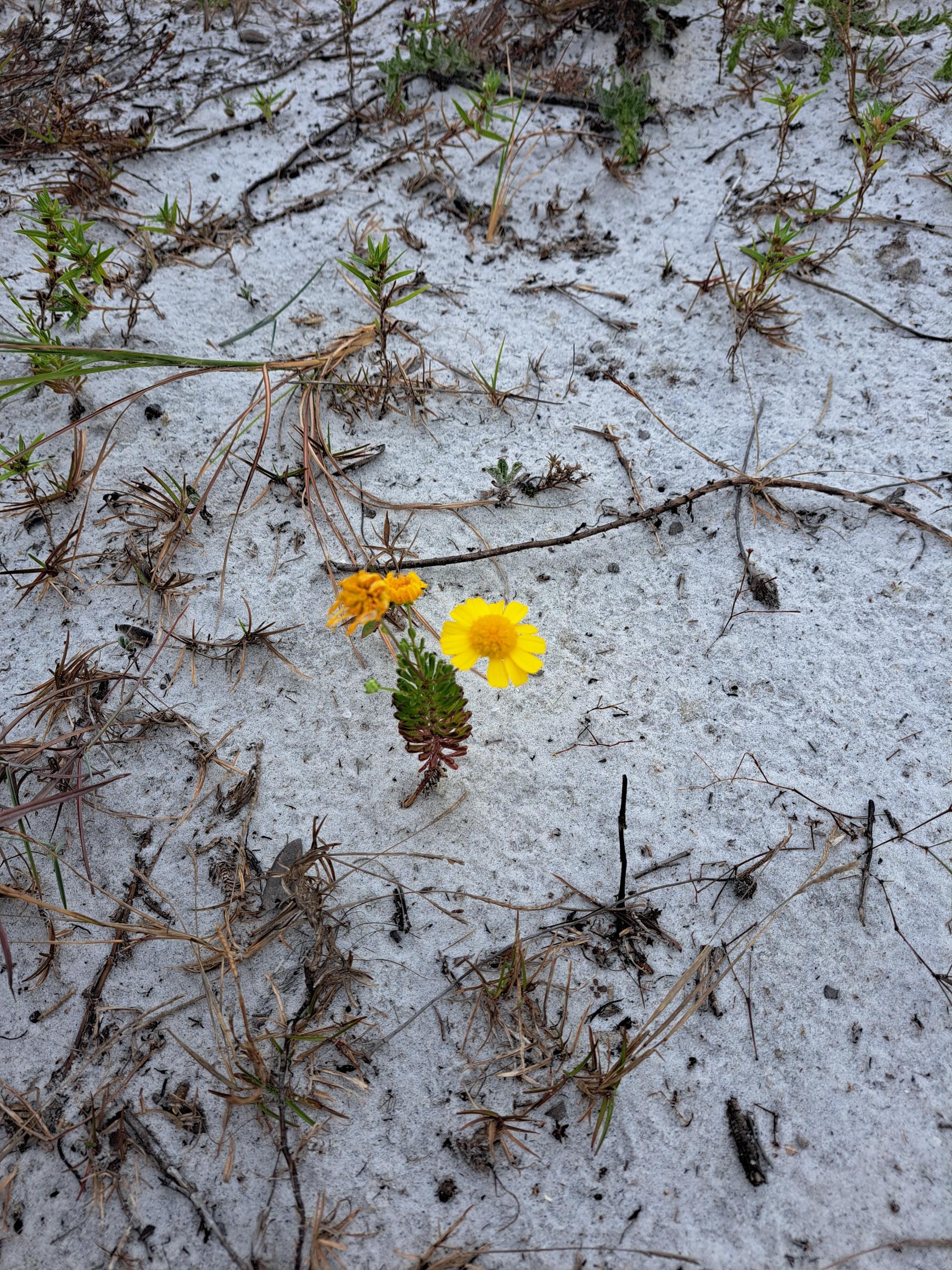
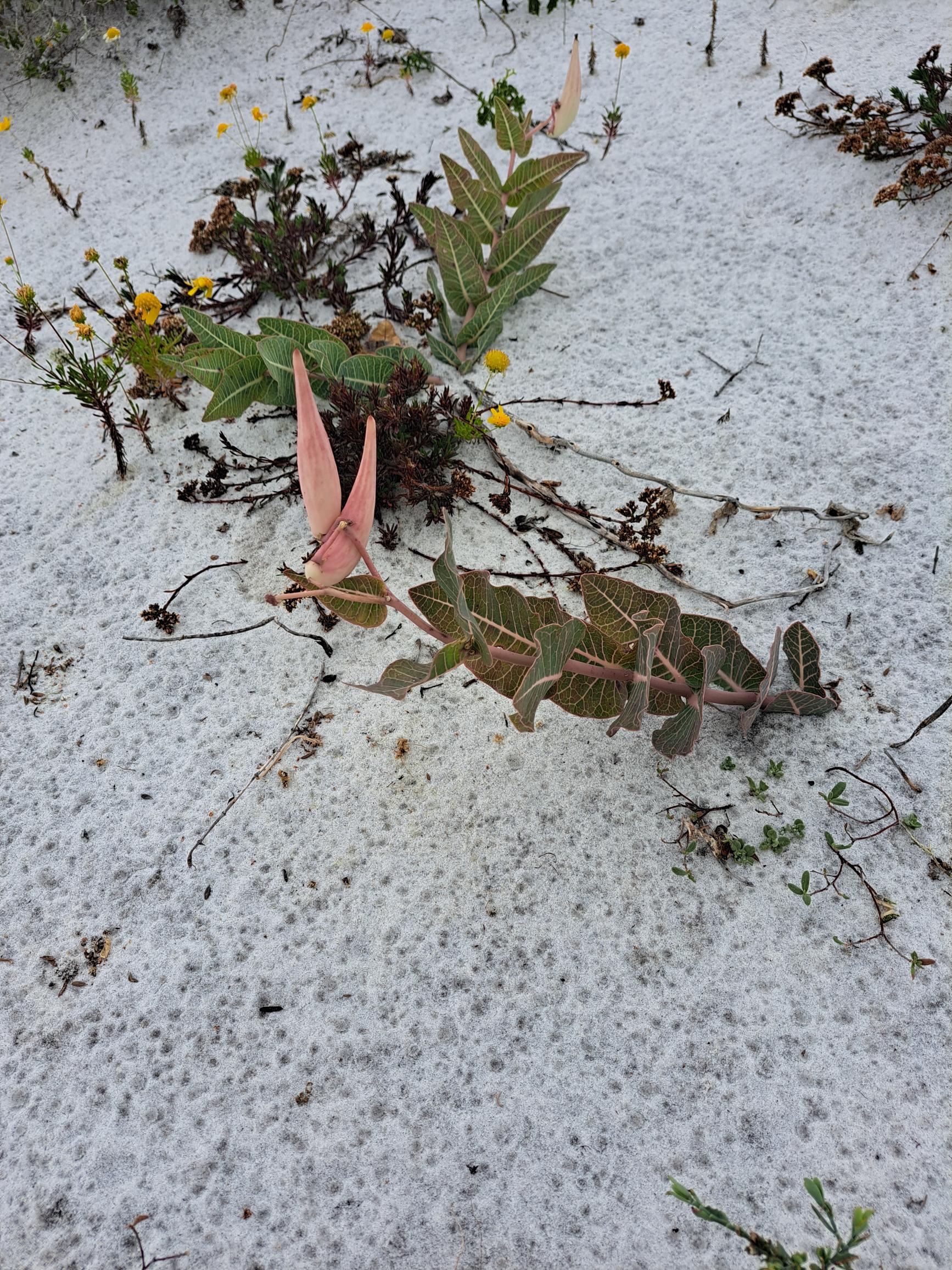
Sandhill milkweed (Asclepius humistrata) was past its blooming time, but the pink-veined foliage and pinkish seed pods made the plants stand out. This native is a larval host for monarch, queen, and other butterfly caterpillars and supports many native bees.
We weren’t lucky enough to see a gopher tortoise, but low-growing gopher-apple (Geobalanus oblongifolius) was in good supply. The fruit of this native plant is eaten by the tortoise and small mammals, and its flowers attract butterflies, moths, bees, wasps, and ants. This ground cover tolerates salty wind and helps stabilize sandy soils where it grows.
Soon the landscape began to change to more open pine flatwoods. I’m often surprised to notice how a change of a few inches in elevation can make a difference in the habitat. Here, more longleaf pines appeared to thrive in the sandy, well-drained soils.
We headed back along the coastal marsh bordering Western Lake, one of three dune lakes in the state park.
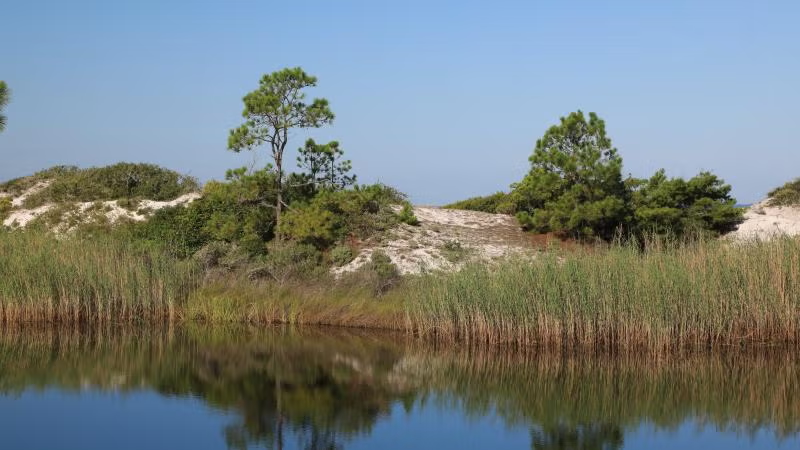
Grayton Beach State Park. Photo by FDEP
Coastal dune lakes are a rare natural phenomenon only found in four countries around the world, and in just two states in the United States: Florida and Oregon. Fresh water from rainfall, groundwater, and streams feed the lakes. When water levels in the lakes are high, this water moves to the Gulf in outfall channels. Saltwater, as well as plants and animals from the Gulf, return through the outfalls into the lakes. This mix of freshwater and saltwater species is crucial for this unique ecosystem.
Our hike finished back at the parking lot by a walkover through the dunes. With the clouds, wind, and waves, the beach was still inviting for a walk.
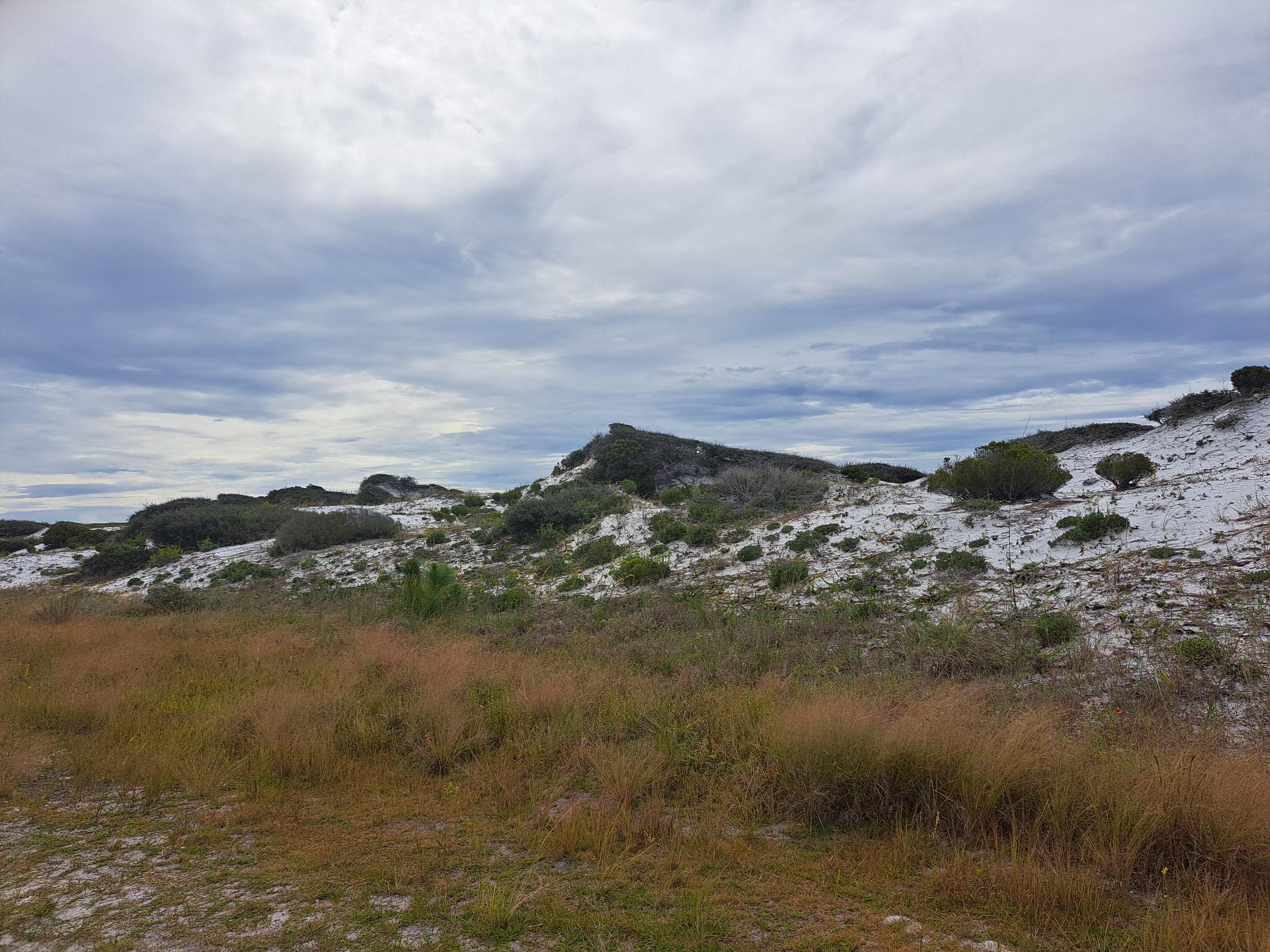
Our state parks are treasured places to enjoy the natural beauty of Florida. They conserve vital habitat and ecosystems, protecting water and wildlife. They offer excellent recreational opportunities for us to get outside across the state.
How to Visit
Location: Grayton Beach State Park is located at 357 Main Park Road, Santa Rosa Beach, FL 32459.
Time to go: Early morning or late afternoon for cooler temperatures and fewer crowds. Spring and fall offer pleasant weather and great wildlife viewing opportunities.
Plan ahead:
- The park is open daily from 8 a.m. to sunset. Entry fees are $5 per vehicle.
- Trails can get sandy and uneven—wear comfortable, sturdy shoes.
- Bring water, sun protection, and insect repellent, especially in warmer months.
- Pets are welcome on designated trails but not on the beach.
- Check trail conditions and park alerts before visiting on the Florida State Parks website.
- Pack a picnic, as there are shaded areas near the lake perfect for a lunch break.


